By Sjoerd Willem Duiker, Zachary Larson
Many farmers think small grains are not as profitable, but in some cases a corn-soybean-wheat-cover crop rotation can be more profitable than corn-soybean.
With the increasing popularity of soybeans, small grains have gone by the wayside in the eastern and Midwestern U.S. Did you know, for example, that in 1970 Pennsylvania farmers grew 28,000 acres of soybeans but harvested almost 400,000 acres of oats, 275,000 acres of wheat and 172,000 acres of barley? In contrast, USDA statistics show that in 2019 our farmers harvested 610,000 acres of soybeans, 80,000 acres of oats, 140,000 acres of wheat and 25,000 acres of barley. In other words, small grains decreased in importance by 600,000 acres, while soybeans increased 580,000 acres. There are many reasons for this, not the least being the enormous investment that has been made in soybean improvement and agronomy and the many end-products that have been created from soybeans.
The decline of small grains is unfortunate because they bring a unique diversity to our rotations that help improve sustainability. For example, we are becoming more aware of the need to have living roots in the soil because soil biological activity is concentrated in the rhizosphere – the soil surrounding living roots. If we compare corn-soybean-wheat/cover crop rotation with a corn-soybean rotation, we have living roots in the soil much longer (on average 83% versus 50% of the year). We are also experiencing the ‘leakiness’ of corn and soybean crops – research from Purdue University documented that about 30 lbs./A of nitrate-nitrogen leached into groundwater in a corn/soybean rotation without a cover crop!
In addition, you have more options for integrated pest management if you have a small grain in the rotation. Many farmers rely too heavily on glyphosate to control weeds in roundup-ready corn and soybeans and this has led to development of glyphosate-resistant weed populations in our nation that necessitate adding other herbicides to our weed control program. Resistance management is so much easier with small grains in the rotation because farmers do not rely on glyphosate for in-crop weed control. Further, certain weeds are just more adapted to summer crops and tend to proliferate more without a winter crop in the rotation.
It is also possible to use farm equipment more efficiently in a rotation that includes small grains because field operations are at another time of the year than corn and soybeans – so it is possible to add additional acres to the operation without having to upgrade equipment or you can fit planting and harvest into smaller windows with less acreage in one particular crop. This concept applies to many parts of an operation including labor, equipment and drying and handling capacity.
However, many farmers think that small grains are less profitable than corn or soybeans, so they don’t give them any thought. We were interested in determining whether this was true. We compared a corn-soybean rotation to a corn-soybean-wheat/cover crop rotation using University of Maryland’s 2019 Crop Budgets. We used 60 bu/A soybeans and 170 bu/A corn for the corn-soybean rotation and 60 bu/A soybeans, 75 bu/A wheat grain and 2 T/A straw, and 178 bu/A corn in the diverse rotation. We also included establishment and management costs of a crimson clover/radish/annual ryegrass cover crop after wheat (costing $71/A). We used no-till in all cases. The 3% higher corn yield in the diverse rotation is conservative and based on the ‘rotation effect’ that is commonly observed when we grow corn in a diverse rotation. Just FYI - in a long-term crop rotation experiment in central Pennsylvania the average corn yield was about 5% higher in a corn-oat/red clover/timothy hay rotation than in a corn-soybean rotation.
One benefit from the diverse rotation and cover crops is the nitrogen fertilizer value of the cover, which allowed us to reduce the nitrogen fertilizer application from 170 lbs./A (assuming standard recommendations) to 70 lbs./A, which is about equal to the seed cost. The calculations (see Tables 1 and 2) show that the average annual return (excluding land rent) of the corn-soybean rotation was $303/A. In contrast, the average annual return of the diverse crop rotation was $329/A. This shows that, if you have a straw market (which is the case for many of our farmers), a corn-soybean rotation can be less profitable than a corn-soybean-small grain-cover crop rotation. So if you’re looking for ways to diversify your rotation and add cover crops while staying profitable, we suggest you run the numbers for the prices, yields and costs typical for your area and see if bringing back small grains can work for you.
Table 1. Economic analysis of corn-soybean rotation.
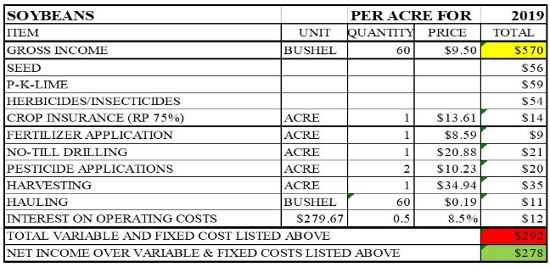
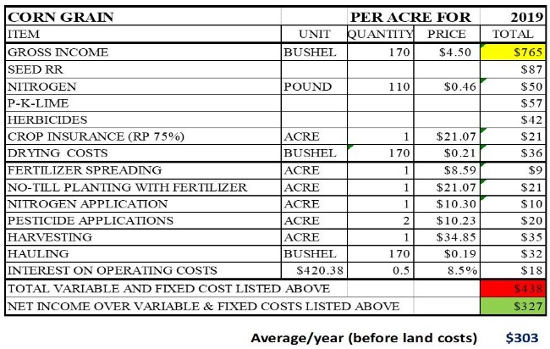
Table 2. Economic analysis of corn-soybean-wheat/cover crop rotation.
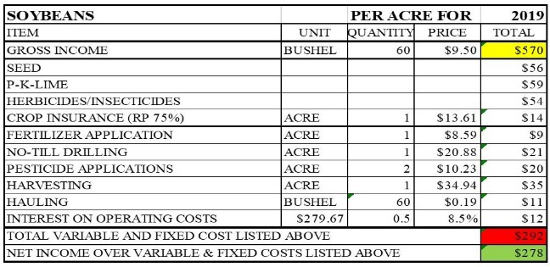
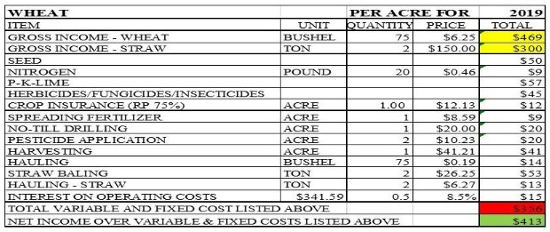

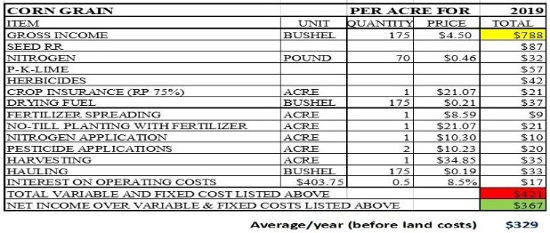
Source : psu.edu